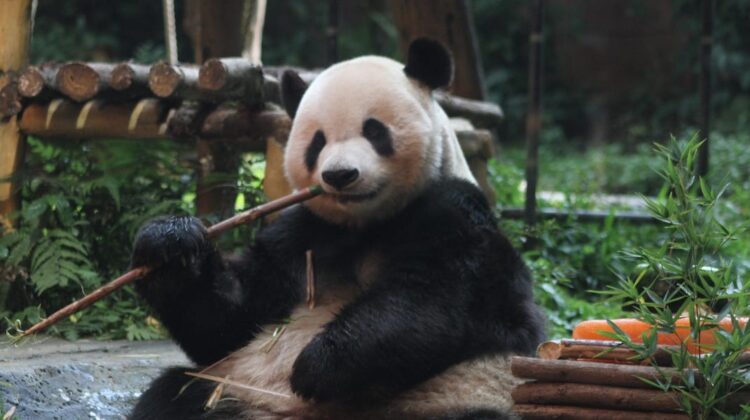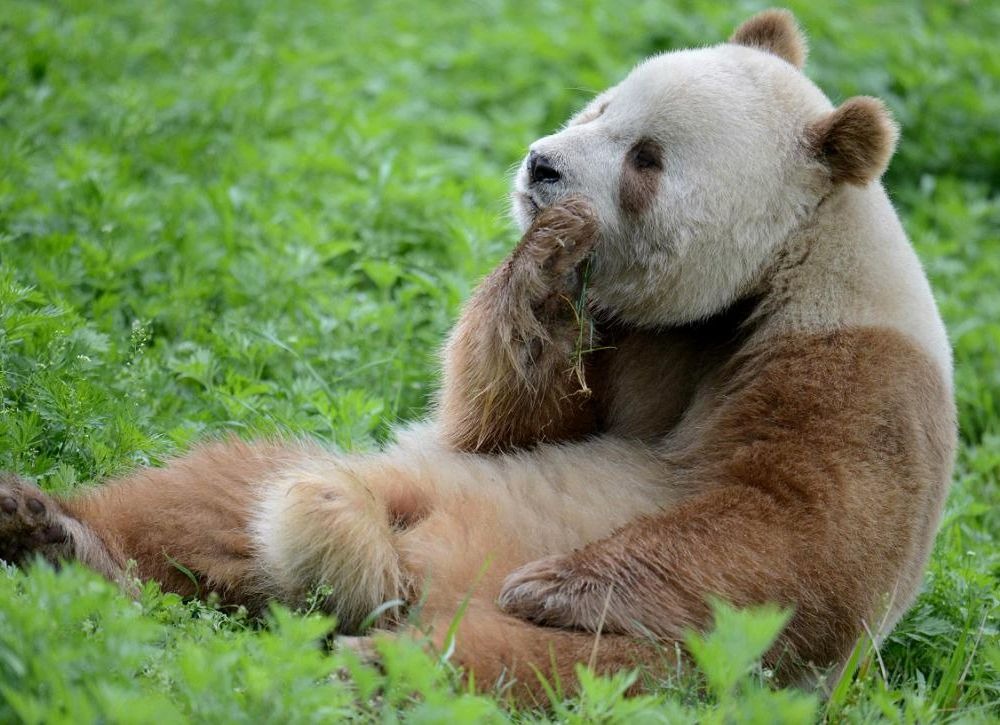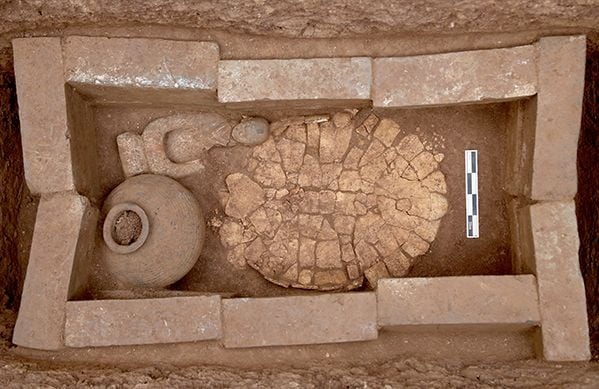
In a breathtaking archaeological revelation, a monumental mausoleum housing the remains of Emperor Wen of Han and his royal entourage has unveiled a treasure trove of wonders, including a rare and astonishing find: the fully intact skeleton of a giant panda. This monumental discovery sheds light on the ancient Chinese reverence for the animal kingdom and their intriguing practices surrounding burials.
Situated in China’s Shaanxi Province, the imperial tomb complex, excavated over the course of 2021 and 2022, reverberates with the echoes of history. Beyond the grandeur of Emperor Wen’s burial, the sheer variety of creatures interred alongside him has astonished experts. From Indian wild buffaloes to golden snub-nosed monkeys and red-crowned cranes, this diverse assortment mirrors the emperor’s association with the natural world. However, it’s the giant panda’s presence that has captured the imagination of the public and researchers alike.

Leading the excavation was Hu Songmei, an archaeologist from the Shaanxi Provincial Institute of Archaeology, who identified the extraordinary remains by comparing them with existing panda bone specimens. Remarkably, the skeleton remained fully intact, positioned within a sacrificial pit just outside Emperor Wen’s tomb. The panda’s head faced the tomb, while its tail pointed towards the west. Resting atop a tiled brick structure, the placement of the creature within the tomb’s surroundings speaks to the intricate rituals and beliefs that defined this ancient culture.
Analyses of the skeletal structure suggest that the panda in question belonged to the Qinling subspecies, known for its distinct facial characteristics. Although uncovering a complete panda skeleton is an exceptional occurrence, fragments of sacrificed pandas have been found at similar historical sites. In 1975, during the excavation of Empress Dowager Bo’s mausoleum nearby, archaeologists discovered a panda skull, though its body was missing, likely due to theft by grave robbers.

Emperor Wen and Empress Dowager Bo’s practice of interring animals within their final resting places was not an anomaly. Historical accounts reveal that animals were often companions for the deceased in ancient Chinese royal burials, embodying their social status and roles. Such a practice also echoed the imperial gardens mentioned in written records, which frequently featured the same array of species. In a fascinating twist, these animals may have been included to replicate these gardens in the afterlife, adhering to the belief that the deceased should be attended to as if they were still living.
Intriguingly, the presence of the giant panda could have been a way to recreate these royal gardens, even if the species was not abundant in the region. The creatures may have been offerings from southern China, where pandas were more commonly found. Alternatively, the thriving panda population in Shaanxi, possibly due to a more favorable climate during the Han dynasty, could explain their inclusion in the burial.

Alongside the giant panda, the excavation team unearthed another astonishing find: the complete skeleton of an Asian tapir. This enigmatic creature, related to horses and rhinos, adds an extra layer of intrigue to the site. With both animals coexisting within the tomb, it becomes evident that ancient Chinese texts referencing tapirs might have been describing distinct creatures.
In every unearthed artifact and skeleton, the story of an ancient civilization unfolds. The grandeur of Emperor Wen’s mausoleum and the intriguing company he took to the afterlife unveil a tapestry of beliefs, rituals, and connections to the natural world. As these remarkable findings continue to captivate the world, they remind us that history’s mysteries are still waiting to be unraveled, offering a glimpse into the intricate lives and practices of those who came before us.

Leave a Reply